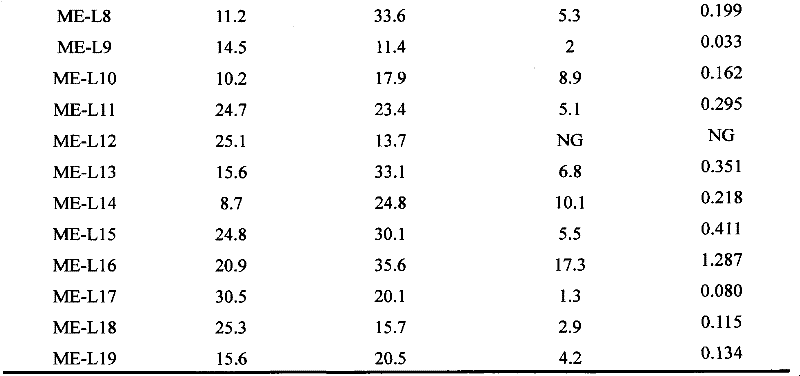Mortierella isabellina and application thereof
A technology of Mortierella flavus, classified and named, applied in the field of bioengineering, can solve the problem of low gamma-linolenic acid yield, etc., and achieve the effects of wide growth range, good development prospects and easy extraction.
- Summary
- Abstract
- Description
- Claims
- Application Information
AI Technical Summary
Problems solved by technology
Method used
Image
Examples
Embodiment 1
[0033] Example 1: Screening method of high GLA-producing strains.
[0034] On December 24, 2009, a soil sample was collected from the surface of the tea garden of Nanjing University of Technology, weighed 3.0 grams, baked at 90°C for 36 hours, added to 100 mL of sterile water to prepare a suspension, and then diluted with sterile water to 10 -6 , Take 0.1mL dilution and spread it on a plate containing a certain concentration of red tetrazolium medium, culture at 25°C to observe the color change of the colonies, and pick out the red colonies on the re-screening plate (containing a certain concentration of glycyrrhizic acid) Streak separation, streak and purify the single colony that can grow on the glycyrrhizic acid medium for one generation, and finally shake flask fermentation to detect the GLA content in the bacterial oil (see Table 1), and screen the high-yielding strain ME-L16.
[0035] In this screening method, the basic medium for the primary screening is PDA, which contains r...
Embodiment 2
[0042] Example 2: Determination of optimal growth temperature and pH range of strains.
[0043] The ME-L16 strain was transferred to PDA solid medium and cultured at 25-28°C for 5-7 days. The spores had grown and matured. Use an inoculating loop to pick 2 loops of spores and culture in 50 mL of liquid seed medium at 25-28°C for 2 days. Insert 10% of the inoculum into the fermentation medium and cultivate for 6-8 days. The culture temperature and pH are respectively subjected to single-factor experiments. The pH of the medium is adjusted to 4.5, 5.5, 6.5, 7.5, and 8.5; the culture temperature is respectively It is 20, 23, 25, 28, 30°C. Measure the dry weight, and use GC-MS to detect the content of GLA. Analyze the optimum temperature and pH for the fermentation of the strain to produce GLA. It can be seen from Table 2 that the optimum pH of the bacteria is 5.5-7.5, and it can be seen from Table 3 that the optimum growth temperature of the bacteria is 25-28°C, and the accumulati...
Embodiment 3
[0050] Example 3: Laboratory cultivation of ME-L16 strains.
[0051] PDA medium: potato 200g / L, glucose 20g / L, agar 15g / L, add water to 1L, and sterilize at 121°C for 20min. (Preparation method: peel the potato, cut into pieces and boil for 30 minutes, then filter with gauze, add sugar and agar, and make up water to 1000mL after melting.) When the PDA slope is cooled, insert the ME-L16 strain and culture at 25°C for 5 days. The mature spores are washed with sterile water, filtered through 6-8 layers of gauze, and connected to shake flasks for activation and culture. Shake flask activation medium contains the following components: glucose 30g / L, yeast extract 6g / L, KH 2 PO 4 3g / L, MgSO 4 ·7H 2 O 0.5g / L, the rest is water, pH 7.0, a shake flask with a liquid volume of 250mL is filled with 50mL of activation medium, 120rpm, 25°C, activation for 3 days. Then the activated strain was connected to the fermentation medium, and the 250 mL shake flask was filled with 50 mL of the ferment...
PUM
 Login to View More
Login to View More Abstract
Description
Claims
Application Information
 Login to View More
Login to View More - R&D
- Intellectual Property
- Life Sciences
- Materials
- Tech Scout
- Unparalleled Data Quality
- Higher Quality Content
- 60% Fewer Hallucinations
Browse by: Latest US Patents, China's latest patents, Technical Efficacy Thesaurus, Application Domain, Technology Topic, Popular Technical Reports.
© 2025 PatSnap. All rights reserved.Legal|Privacy policy|Modern Slavery Act Transparency Statement|Sitemap|About US| Contact US: help@patsnap.com



